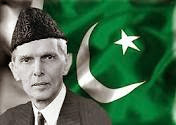Process of learning is
called education and education is the basic right of every person. A nation can
be strong with educated citizens and education plays a vital role in the
progress of any nation and responsible for its advancement towards success and
Education is the light of the life. Education proves to one of the most
important factors for the development of human civilization. Education enhances
human status and leads everyone to propriety. it is a continuous and lifelong
process. It attributes most important, precious and permanent property of an
individual. Education provides manpower, strengthens national unity and uplifts
public awareness. It invites positive and constructive change in life. It makes
our life really prosperous and meaningful. Everyone wants to be well educated.
Life can be successful by the help of appropriate education. Educated person
can only judge what is correct and what is wrong?? And takes the appropriate
and right decision but uneducated person fails to do so and the education
system in Pakistan is generally divided into five levels, primary ,grades one
through five, middle ,grades six through eight, high ,grades nine and ten,
leading to the Secondary School Certificate or SSC, intermediate, grades eleven
and twelve, leading to a Higher Secondary ,School, Certificate or HSC, and
university programs leading to undergraduate and graduate degrees. The literacy
rate ranges from 96% in Islamabad
to 28% in the Kohlu District. Between 2000 and 2004, Pakistanis in the age
group 55 to 64 had a literacy rate of almost 38%, those ages 45 to 54 had a
literacy rate of nearly 46%, those 25 to 34 had a literacy rate of 57%, and
those ages 15 to 24 had a literacy rate of 72%. Literacy rates vary regionally,
particularly by gender. In tribal areas female literacy is 9.5%. Moreover,
English is fast spreading in Pakistan, with 18 million Pakistanis ,11% of the population,
having a command over the English language, which makes it the third largest
English-speaking nation in the world and the second largest in Asia. On top of that, Pakistan produces about 445,000 university graduates and
10,000 computer science graduates per year. Despite these statistics, Pakistan still has one of the highest illiteracy rates in the
world and the second largest out of school population ,5.1 million children,
after Nigeria. Education is taken care of both by the public and
private sector. The private sector instituions flourish due to their high
qaulity education and better physical facilities. Private Schools in Pakistan enroll more students than in other countries of the
region. They least bother about the capacity and facilities available, they
rather over burden the teaching staff. The rapid mushroom growth of private
schools and academies of teaching reflect the people's lack of trust in the
public sector schools coupled with a deficiency of sufficient educational
institutions to cater to the needs of the fast growing population. However,
there are certain private schools which are slightly better than the public
ones. In the elite schools where the quality education is offered, heavy fees
is charged that continues to be a problem. These private sectors schools are
meant only for a special sector of the population and are out of the reach of
general masses. The private sector schools should be brought under the control
of rules making these somewhat accessible for the common population.
Globalization has greatly influenced our thought process, culture and ideology.
It has a huge impact on education. On one hand, globalization has made higher
education a web of knowledge through Information Technology and on the other,
it has changed the structure of higher education through Neoliberal reforms.
Due to higher demands and global necessities, public structure of higher
education is converting into private structure. With increased number of higher
education candidates, the role of universities has been transformed into
knowledge workers from knowledge producers. As a result of privatization in
higher education, number of universities is increasing day by day. But there is
an imbalance in quantity and quality of higher education. Quantity is preferred
over quality because of lack of funds. In 1947, there was only one university
in Pakistan i.e. University of The Punjab, Lahore. Four years later, one university was set up in Peshawar and two in Karachi. During the regime of Ayub Khan 1958 to 69, two
professional engineering and agricultural universities opened. The most
remarkable work in public higher education was done during the Bhutto
regime,1971 to 77. Seven universities in Sindh and southern Punjab, nine centers of excellence for promoting high quality research in
different fields and seven area study centers were opened. During this era
controlling authority of higher education UGC ,University Grand Commission,
which is now reformed as Higher Education Commission was
established. If looked at beyond its conventional boundaries, forms the very
essence of all our actions. What we do is what we know and have learned, either
through instructions or through observation and assimilation. When we are not
making an effort to learn, our mind is always processing new information or
trying to analyze the similarities as well as the tiny nuances within the
context which makes the topic stand out or seem different.












.jpg)
.jpg)





.jpg)



